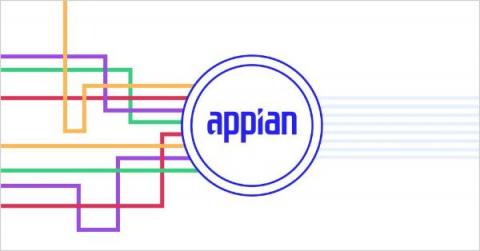Systems | Development | Analytics | API | Testing
Appian
Create a Process Improvement Plan from the Ground Up With Process Mining
Shakespeare wrote that the course of true love never did run smooth. The same could be said of diving into a process improvement project without a plan. Before jumping in head first with process mining to identify and fix a broken or inefficient process, start with a strong plan to avoid headaches for yourself and others. A written plan provides direction, while giving your stakeholders something to react to. They’ll see exactly what you want to do, and have the opportunity to make suggestions.
Easy by Design: A Digital-First Approach to Insurance Distribution Management
When a leading office supply chain coined the phrase “That was easy!” in an iconic 10-year-long ad campaign, that simple idea resonated with people everywhere. And that’s no coincidence. None of us wants our daily tasks to be labor-intensive, time-consuming, or complicated. The same is true in the world of insurance. To drive growth, insurers need to make it easy for agents and brokers.
How Does Process Mining Work? Plus 7 Misconceptions Debunked
In the past, the process improvement aspect of business process management relied on lengthy and time-consuming research. Process managers held discussions with stakeholders, made guesstimates about how or why a process underperformed, and spent days, sometimes weeks testing enhancements to see if they could observe a difference. Now, businesses have access to a data-driven process optimization tool: process mining.
Building enterprise apps and automating workflows rapidly, but successfully.
How to Drive Digital Transformation at Global Scale: Sibos 2022 Recap
What an action-packed week at Sibos, the world’s premier financial services event held last month in Amsterdam. It was exciting to be back with other industry leaders to talk about the future of banking and how intelligent automation is critical for success. Appian is modernizing processes for some of the largest banks, including many in attendance. In fact, we were excited to kick off Sibos on stage together with our client Rabobank, the second largest bank in the Netherlands.
6 Ways to Supercharge Business Process Efficiency with Process Mining
We’d all love more efficiency in our lives. If it were possible to eliminate the time we spend waiting in lines at the grocery store, checking in at the airport, or making our way home in rush hour traffic, the world would be a happier place. Some inefficiency is inevitable. But in business, we don’t have to accept it all. There are ways to root out the causes of many inefficiencies in business processes, minimizing, if not eliminating them. The way to do this is with process mining.
Transform Your Business Processes with an Enterprise Data Fabric Solution
With the explosion of digital innovation, there has been an equal explosion in tools and techniques to wrangle the ever growing amount of data. Maybe you’ve heard of But among the hottest new trends is building a Data Fabric. A data fabric connects data across systems to create a unified view without needing to move data from where it currently lives. This provides a core capability for the composable design of business applications leveraging multiple systems.
Transform the new hire experience with Appian and Accenture
3 Features Developers Will Appreciate in the Appian 22.4 Release
The 22.4 release ends the year on a high note with faster Appian Portal deployment (via the Appian Designer), a stylish rebrand of the Appian Process Modeler (to keep your workflow looking good), and a time-saving automation upgrade (of the RPA agent launch process). With the last release of 2022, we want to say a special thank you to our dedicated Community of developers and engineers. Your expertise, feedback, and dedication to Appian are what keep us improving and expanding with every feature.










